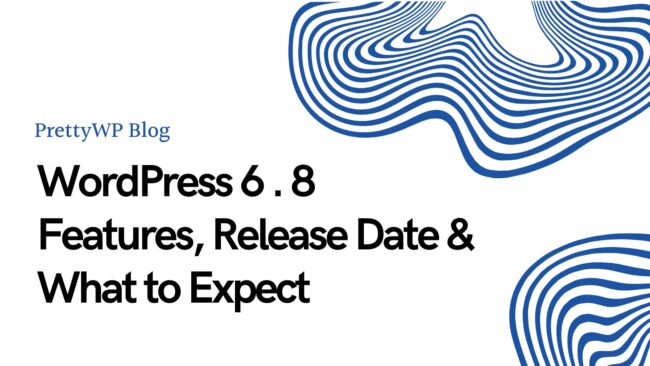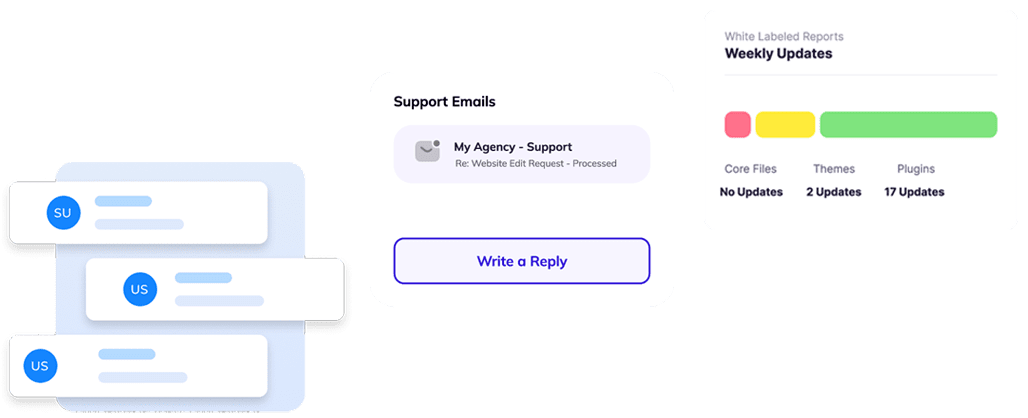Finding clients for your agency can be tough, especially with so many other agencies out there trying to do the same thing. Whether you’re experienced or just starting out, you need a solid plan to attract clients. The internet has opened up many opportunities, but it also comes with its own challenges.
Here are some of the main obstacles you might face:
- Understanding the Market: With so many agencies competing for attention, it’s crucial to know what your potential clients want.
- Meeting Client Expectations: Today’s clients expect personalized and innovative solutions, which means agencies must constantly evolve.
The good news is that there are effective strategies you can use to overcome these challenges and find clients who are a good fit for your agency. In this article, we’ll explore various client acquisition strategies that can help you attract and retain clients.
We’ll cover topics such as:
- Understanding client needs
- Utilizing social media
- Networking opportunities
Each strategy will be broken down into practical steps that you can implement in your agency. Our goal is to provide you with actionable insights that will lead to sustainable growth and success in finding clients for your agency.
Understanding Client Needs
Understanding client needs is the cornerstone of successful agency-client relationships. Grasping what potential clients require and their specific pain points allows you to tailor your services to meet their expectations effectively.
Importance of Knowing Potential Clients’ Needs and Pain Points
Clients seek agencies that comprehend their unique challenges and can offer solutions that directly address these issues. By identifying what keeps your clients awake at night, you’re better positioned to:
- Build Trust: Demonstrating a deep understanding of client challenges helps in establishing credibility and trust.
- Tailor Solutions: Customized offerings based on specific client issues lead to more effective problem-solving.
- Enhance Satisfaction: Clients feel valued when their needs are acknowledged, resulting in higher satisfaction levels.
To get started, engage in conversations with potential clients, conduct surveys, or analyze industry reports to gather insights into common problems faced by businesses in your target market.
Analyzing Different Business Models
Analyzing business models is essential to ensure your services align with the operational framework of your potential clients. Each business model presents distinct characteristics that influence how services should be tailored. Here’s how you can leverage this analysis:
- Identify Revenue Streams: Understanding whether a company relies on subscription models, direct sales, or another revenue stream helps tailor marketing strategies. For instance, subscription-based businesses may benefit from content that highlights long-term value.
- Assess Cost Structures: Knowing if a business operates on a low-cost model versus a premium pricing strategy will inform the level of service you propose. High-ticket items might allow for more comprehensive service packages due to larger budgets.
- Evaluate Customer Segments: Businesses catering to niche markets may require highly specialized services compared to those targeting broader demographics.
Practical Steps for Analysis
- Research Competitors: Look at how similar businesses operate within the industry to identify common patterns.
- Study Financial Reports: Public companies provide valuable insights through financial disclosures.
- Engage Directly: Conversations with key stakeholders can reveal operational secrets not evident from external analysis.
By integrating an understanding of client needs with an analysis of their business models, agencies can create bespoke solutions that resonate with clients’ unique situations. This approach not only boosts the efficacy of your offerings but also positions your agency as an indispensable partner in their success journey.
Leveraging Industry-Specific Knowledge
Understanding the intricacies of various industries can greatly improve your ability to attract and keep clients. Each sector has its own set of challenges, opportunities, and pain points that can be used to customize your services more effectively. This in-depth understanding of specific industries not only establishes you as an expert but also helps build trust with potential clients.
Understanding Specific Industries to Better Serve Clients
To start, it is essential to gain a thorough understanding of the industries you want to target. By immersing yourself in industry-specific trends, jargon, and common practices, you can offer insights that resonate with potential clients. Here’s how you can deepen your industry knowledge:
- Conduct Market Research: Analyze reports, case studies, and white papers related to your target industries. These resources offer valuable data on market size, growth trends, and emerging technologies.
- Identify Key Players: Knowing who the major players are within an industry provides perspective on competitive dynamics and benchmarks for success.
- Stay Updated with Industry News: Regularly read trade publications and subscribe to newsletters that focus on specific sectors. This keeps you informed about the latest developments and shifts in the market landscape.
This level of understanding allows you to customize your agency’s offerings to meet the unique demands of each industry.
Engaging in Forums and Communities Relevant to Your Target Industries
Once you’ve acquired industry knowledge, directly engaging with communities and forums becomes a powerful strategy for client acquisition. These platforms serve as fertile ground for networking and establishing authority within a niche.
- Participate in Industry-Specific Forums: Platforms like Reddit or specialized industry forums are invaluable spaces where professionals discuss trends, challenges, and solutions. By contributing thoughtfully to these discussions, you can showcase your expertise and identify potential leads.
- Join Networking Events: Whether virtual or in-person, attending industry-specific networking events allows for organic connections with businesses looking for solutions that your agency provides. Keep an eye out for webinars, conferences, and meetups where decision-makers from your target industries congregate.
- Engage on Social Media Groups: LinkedIn groups or Facebook communities dedicated to specific industries offer another venue for interaction. Actively participate by sharing insights or posing questions to spark dialogue.
These engagements not only help in building relationships but also provide deeper insights into client needs directly from those experiencing them first-hand.
Leveraging industry-specific knowledge along with active involvement in relevant communities positions your agency as a knowledgeable partner ready to tackle complex business challenges. This strategic approach not only helps attract new clients but also nurtures long-term partnerships based on credibility and expertise.
Using Social Media to Acquire Clients
In today’s digital world, social media is crucial for agencies looking to acquire clients. Platforms like Facebook, Instagram, and Twitter have a wide reach and influence, making them excellent tools for connecting with potential clients who are actively engaging with content. When used effectively, these platforms can greatly improve your agency’s ability to attract social media clients.
How Social Media Affects Client Acquisition
Social media is more than just a way to interact with others; it’s also a valuable tool for acquiring clients. Here’s how it can help you find new business opportunities:
- Direct Access to Large Audiences: Social media platforms allow you to reach a vast number of people without any geographical restrictions. This means you can instantly showcase your agency’s skills and services to a wide audience.
- Two-Way Communication: Unlike traditional advertising methods, social media encourages conversation and interaction. By engaging with potential clients through comments, shares, and messages, you can build meaningful connections that foster trust and interest.
- Increased Brand Recognition: Being active on social media consistently boosts brand visibility. When you regularly share valuable content, it positions your agency as an expert in its field. As a result, businesses are more likely to contact you when they require services similar to yours.
Finding Potential Businesses Through Targeted Social Media Ads
Using social media advertising strategically allows you to identify businesses that fit your ideal client profile. Here are some effective ways to do this:
- Advanced Targeting Options: Take advantage of the advanced targeting features offered by platforms like Facebook and Instagram. Craft ads that specifically speak to the industries or market segments you want to attract.
- Analyzing Competitor Ads: Keep an eye on the ads appearing in your feeds from other businesses within your target industry. Pay attention to their messaging, visuals, and calls-to-action—this will give you insights into their marketing strategies and help you identify potential gaps that you can fill.
- Monitoring Engagement Levels: Look out for the engagement metrics of these advertised posts—high levels of engagement often indicate successful campaign strategies that resonate with the audience.
- Assessing Competitor Content Strategies: Visit the profiles of businesses whose ads catch your attention and evaluate their overall content strategy. Identify areas where your services could provide value or improvement.
- Implementing Retargeting Strategies: For users who have interacted with your initial ads but haven’t converted yet, implement retargeting strategies. This keeps your agency fresh in their minds and increases the chances of conversion over time.
By leveraging social media in this way, you’re not simply waiting for clients to come to you; instead, you’re actively seeking them out through a strategic approach tailored to meet their needs while showcasing what makes you unique.
With this understanding of how social media can help attract social media clients, you’ll be better equipped to navigate the digital marketplace effectively—making decisions that align with both current trends as well as long-term goals for your agency.
Using LinkedIn to Find New Clients
LinkedIn is a powerful tool for agencies looking to find new clients, especially in the B2B (business-to-business) industry. Unlike other social media platforms, LinkedIn is specifically designed for professionals to connect with each other. This makes it an ideal place for agencies to reach out to potential clients who hold important positions in their companies, such as Brand Managers or Marketing Managers.
Why LinkedIn is Important for Finding B2B Clients
LinkedIn plays a crucial role in helping agencies acquire B2B clients. It serves as a central hub where professionals can network, share insights about their industries, and explore opportunities for collaboration. Here are some reasons why agencies should leverage LinkedIn for client acquisition:
- Direct Access to Decision-Makers: With LinkedIn, agencies can directly connect with individuals who have the power to make marketing decisions within their organizations.
- Networking within Specific Industries: LinkedIn offers groups and forums dedicated to various industries, allowing agencies to engage with professionals who are highly relevant to their services.
- Establishing Authority through Expertise: By sharing valuable content and insights on LinkedIn, agencies can position themselves as authorities in their respective niches. This not only attracts attention but also builds credibility among potential clients.
Analyzing Potential Clients Before Outreach
An effective client acquisition strategy begins long before the initial contact is made. Understanding your potential clients and their needs allows you to tailor your services effectively and make a compelling pitch. This process involves two critical phases: researching potential clients and qualifying leads.
Steps to Effectively Research Potential Clients
Conducting thorough research on potential clients is a foundational step in building successful relationships. Here’s how you can do it:
- Examine Their Online Presence: Start with their website and social media profiles. Look for details about their products, services, target audience, and brand messaging. Pay attention to blog posts, press releases, or news articles that provide insight into their current focus and achievements.
- Assess Their Marketing Efforts: Check if they are running ads on platforms like Facebook, Instagram, or Google Ads. Analyze the content of these ads—do they emphasize brand awareness, lead generation, or product promotion? Understanding their marketing goals can help shape your pitch.
- Identify Key Players: Use LinkedIn to find decision-makers within the company. Focus on roles such as Marketing Directors or Brand Managers who are likely involved in selecting service providers like your agency.
- Review Competitor Strategies: Look at what competitors are doing in the same space—this might highlight areas where your potential client could improve with your help.
- Check Financial Health: If possible, review any public financial data or recent funding rounds to gauge the company’s investment capacity and growth trajectory.
Qualifying Leads Based on Their Marketing Efforts and Internal Resources
Once you have gathered sufficient information about a potential client, the next step is to qualify these leads based on specific criteria:
- Alignment with Your Services: Determine whether the client’s needs align with what you offer. For instance, if they lack a strong digital presence but prioritize online sales, this could be an opportunity for you to showcase your expertise in digital marketing.
- Budget Considerations: Evaluate whether their current marketing budget aligns with your pricing structure. A company investing heavily in advertising might have more flexibility to engage external agencies for strategic support.
- Internal Resources: Assess if they have an in-house team handling marketing efforts or if there’s a gap that your agency can fill. Companies without dedicated resources may benefit from outsourcing key functions to external experts like you.
- Urgency of Need: Prioritize leads that show signs of immediate need for improvement in areas where you specialize—such as increased engagement rates or better brand visibility.
By systematically researching and qualifying potential clients, you’re better positioned to approach them with proposals that resonate with their unique challenges and objectives. This proactive approach not only increases the chances of successful client acquisition but also paves the way for long-term partnerships built on trust and mutual understanding.
Engaging with Clients Through Various Platforms
Identifying and engaging potential clients involves a strategic use of various online platforms. Recognizing the best platforms to find clients and understanding how each platform can serve your agency’s client acquisition strategies is crucial.
Exploring Different Online Platforms for Client Acquisition
Facebook Groups
A treasure trove for networking and client engagement. These groups provide an opportunity to interact with business owners seeking insights, advice, or services related to marketing and social media. By actively participating, you can establish your expertise and build relationships.
- Identify Relevant Groups: Search for groups related to your industry or niche. This might include forums where business challenges are discussed or where marketing professionals gather.
- Engage Thoughtfully: Share valuable content, answer questions, and participate in discussions. Avoid overtly selling your services; instead, focus on building trust and demonstrating value.
LinkedIn Forums
LinkedIn remains a powerful platform for B2B connections. Engaging in industry-specific forums or communities can position you as an authority and connect you with potential clients.
- Join Major Industry Groups: Look for groups active in discussions relevant to your services.
- Contribute Regularly: Consistently share insights, comment on posts, and contribute to discussions. This continuous presence helps maintain visibility among potential clients.
Participating in Webinars and Workshops
Webinars and workshops offer unique opportunities for organic connection with potential clients. They not only position you as a knowledgeable professional but also create a space where genuine interactions can lead to business relationships.
- Host Your Own Webinars: Offer sessions on topics where your agency excels. This allows you to showcase your expertise directly to interested audiences.
“Hosting webinars has dramatically increased our client base by allowing us to demonstrate our knowledge while directly engaging with potential clients,” says David, a successful agency owner.
- Attend Industry Workshops: Engage in workshops that align with your services. Interaction during these events can lead to meaningful conversations that extend beyond the event itself.
- Network During Events: Use these opportunities to introduce yourself to attendees who might benefit from your services.
- Follow Up Post-Event: Send personalized follow-up messages to individuals you interacted with during webinars or workshops, providing additional resources or thanking them for the engagement.
By strategically using these platforms, the search for how to find clients for your agency becomes more targeted and effective. The key is not just participation but purposeful interaction that builds meaningful connections leading to client acquisition.
Networking Strategies for Agencies
Building a strong clientele base is the cornerstone of running a successful agency, and networking plays an indispensable role in this process. Whether you’re attending in-person gatherings or participating in virtual events, each interaction presents an opportunity to forge relationships that can lead to valuable partnerships and ultimately, new clients.
Importance of Networking
Networking isn’t just about exchanging business cards; it’s about building genuine connections that can open doors to new opportunities. For agencies, these connections can be crucial:
- Access to New Clients: Meeting potential clients face-to-face helps establish trust and rapport beyond what digital interactions can achieve.
- Industry Insights: Conversations with peers and industry leaders provide insights into market trends and client needs, allowing you to tailor your offerings more effectively.
- Collaboration Opportunities: Networking often leads to collaborations with other businesses or professionals, expanding your service capabilities.
Bridging Gaps Between Virtual and Physical Spaces
Blending virtual interactions with physical presence can enhance your networking strategy:
- Hybrid Events: Attend hybrid events that combine both online and offline elements, offering broader reach and flexibility.
- Consistent Engagement: Maintain consistent contact with networked individuals through social media platforms like LinkedIn, ensuring relationships remain active between events.
Networking remains a vital tool for agencies seeking growth. By approaching each event—whether virtual or physical—with a strategic mindset, you position your agency not just as another participant but as a key player capable of delivering exceptional value.
Crafting a Personalized Outreach Strategy
In the competitive world of acquiring clients, personalized outreach stands out as a crucial strategy. Potential clients are more likely to respond positively when they see that you’ve taken the time to understand their unique needs and challenges. This approach not only grabs their attention but also builds trust right from the beginning.
How Personalization Increases Response Rates
- Relevance is Key: When potential clients receive communications tailored specifically to them, they’re more inclined to engage. This relevance shows that you value their business enough to understand what makes it tick.
- Building Trust and Connection: Personalized messages demonstrate empathy and insight, fostering a sense of connection. Clients feel valued when they see you’ve put effort into understanding their business, increasing the likelihood of establishing a meaningful relationship.
- Standing Out from the Crowd: Inboxes are flooded with generic pitches daily. A personalized approach helps your message stand out, making it more likely to be read and considered.
Crafting Tailored Messages
Creating messages that resonate with individual businesses involves a thoughtful process:
Research Thoroughly:
- Dive deep into the potential client’s business model, industry trends, and recent achievements.
- Identify key personnel and decision-makers using platforms like LinkedIn.
Highlight Specific Pain Points:
- Address common challenges within their industry.
- Propose solutions based on your agency’s strengths that directly target these issues.
Use Their Language:
- Mirror the tone and terminology they use in their communications and branding.
- This shows alignment with their values and ways of doing business.
Showcase Relevant Case Studies or Testimonials:
- Present past successes that are applicable to their situation.
- Highlight how your services have benefited similar businesses.
Create a Compelling Call-To-Action (CTA):
- Encourage them to take a specific action—whether it’s scheduling a call or visiting your website for more information.
- Ensure the CTA aligns with the goals you’ve identified in your research.
“Personalized communication is more than just addressing someone by name; it’s about creating an experience that feels unique and relevant.”
Investing time in personalized outreach can transform cold leads into warm prospects ready to engage with your agency. By focusing on crafting messages that speak directly to each client’s needs, you pave the way for successful partnerships built on mutual understanding and respect.
This strategy seamlessly fits into broader client acquisition efforts, enhancing overall effectiveness and ensuring your agency remains top-of-mind for potential clients seeking tailored solutions.
Measuring Success and Adapting Strategies Over Time
Keeping track of your agency’s client acquisition efforts is crucial to understanding what works and refining your approach. By measuring specific Key Performance Indicators (KPIs), you can gain insights into the effectiveness of your strategies and make data-driven decisions for improvement.
Key Performance Indicators (KPIs) to Track
- Lead Conversion Rate: This KPI measures the percentage of leads that convert into clients. A high conversion rate indicates that your outreach efforts and messaging resonate with potential clients.
- Cost Per Acquisition (CPA): Understanding how much it costs to acquire each client helps assess the financial efficiency of your marketing strategies.
- Client Retention Rate: While acquiring new clients is important, maintaining relationships with existing ones ensures a steady revenue stream and can lead to referrals.
- Lifetime Value (LTV) of a Client: This metric estimates the total revenue you can expect from a client over the duration of their relationship with your agency.
- Engagement Metrics: Track metrics like email open rates, click-through rates on outreach campaigns, and social media engagement levels to gauge interest in your offerings.
Adapting Your Strategies Based on Feedback
Adapting your strategies isn’t just about looking at numbers; it’s also about understanding feedback from potential clients and stakeholders.
- Monitor Feedback Channels: Collect feedback through surveys, direct communication, or reviews to understand client satisfaction and areas needing improvement.
- Analyze Outreach Results: Evaluate which messages or campaigns yield the highest engagement or conversion rates. Identify patterns or common elements in successful outreach efforts.
- Stay Updated with Industry Trends: The digital landscape is always evolving. Staying informed about industry trends allows you to refine your strategies according to current market demands.
- Test Different Approaches: Implement A/B testing for various outreach methods to determine which tactics work best for different segments of potential clients.
- Regular Strategy Reviews: Schedule periodic reviews of your client acquisition strategy with your team. Discuss what’s working well and identify areas for enhancement.
Embracing a mindset that welcomes change based on concrete data and thoughtful analysis will set your agency apart. Continuously refining how you find clients enhances your ability to connect with businesses that genuinely benefit from your services. This dynamic approach ensures that as market conditions shift, so does your strategy, keeping you at the forefront of effective client acquisition practices.
Final Thoughts
When it comes to finding clients for your agency, the key is to consistently put into practice the strategies we’ve talked about. By understanding what your clients need and using knowledge specific to your industry, you can customize your services to appeal to potential clients. It’s also crucial not to underestimate the importance of platforms like LinkedIn, especially when trying to reach positions such as growth marketing manager. These are essential channels for establishing meaningful connections.
Interacting on different platforms helps build relationships naturally, while personalized outreach strengthens client connections. Keeping an eye on important performance indicators (KPIs) allows you to make strategic changes and continuously improve your efforts in acquiring clients.
Here are some key principles to remember:
- Consistency: Apply these tactics regularly to build a robust pipeline.
- Flexibility: Adapt strategies based on feedback and results.
- Persistence: Patience and persistence are paramount in achieving long-term success.
Make sure to incorporate these tactics into your agency’s growth strategy. With commitment and a comprehensive approach, your agency is on track for transformation and success in attracting high-value clients. Remember, each action you take brings you closer to expanding your agency’s influence and providing exceptional value to those you serve.













